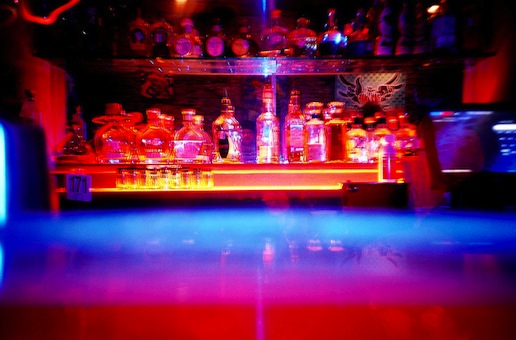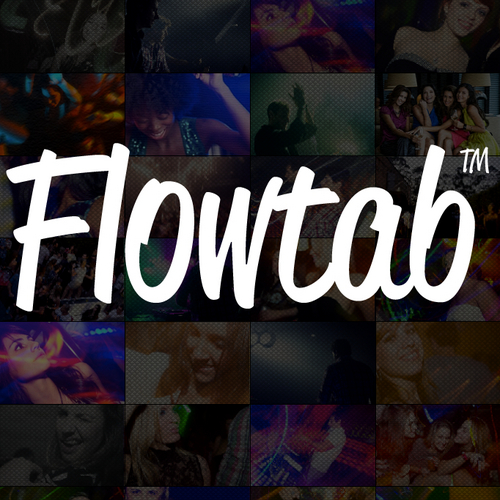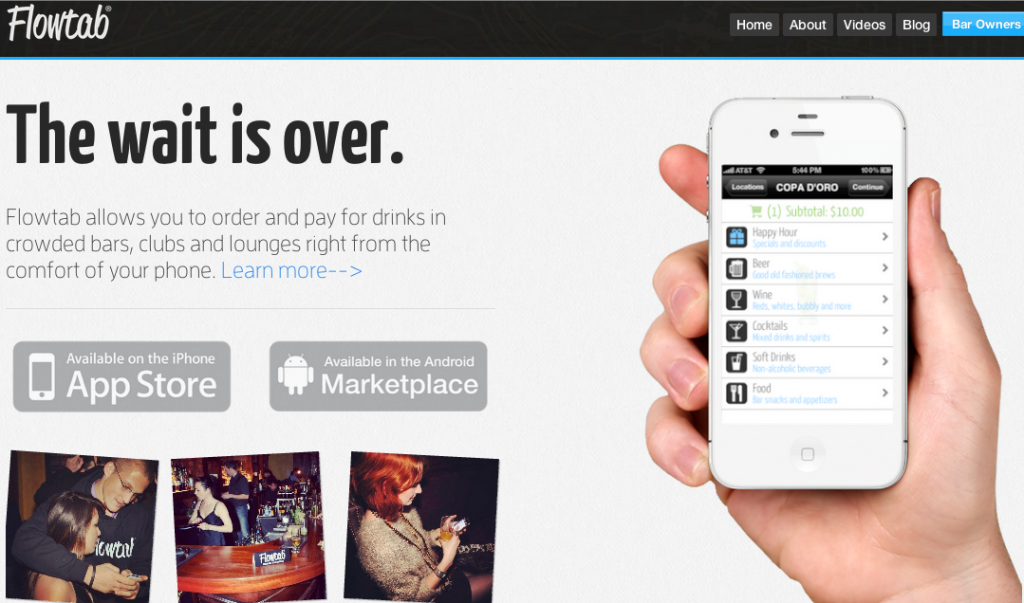At the end of Oliver Stone’s 1980’s classic Wall Street, Charlie Sheen’s Bud Fox sets in motion furious waves of trading around Blue Star Airlines. The trading floor goes mad buying up all the stock, before frantically selling everything. This chaotic mess of frenzied traders and auctioneers is how Flowtab founder, Kyle Hill, describes the ordering drink at bars. Everyone is jockeying for position, waving their money in the air, trying to get the attention of the bartender. He describes it as an incredibly inefficient system that he and his buddies wanted to fix. Thus was born Flowtab.
Flowtab is a mobile app that allows bar patrons to order and pay for drinks directly from their phone. A waitress will then bring out the drinks, completely by passing the awkward experience of waiting for the bartender to acknowledge you. Flowtab’s app relays the orders to the bar’s iPad, which is synced with the bar’s existing point of sale (POS) terminal. Flowtab processes all the transactions, which directs all the funds into the bar’s bank account. The bar owners can easily breakdown the percentage of sales attributed to Flowtab. It sounds like a really useful app, but is it really a big enough problem for widespread adoption?
Hill believes that bars are only the tip of the ice berg for Flowtab. He sees any experience (i.e. concert, movie theatres) where the patron has to wait for food or drink to be a vertical that Flowtab can eventually iterate to. Hill and his team hypothesized that the value proposition for both venues (more sales) and patrons (faster service) is great enough for the adoption that they desire. But like any startup in the pre-Series A stage, Flowtab needs to establish sufficient traction to interest venture capitalists. From the outside, I wonder if Flowtab’s current value proposition is strong enough to lure users.
For a 20-something man, it makes sense for me to want to use an app to order drinks with the promise of faster service. I understand that Flowtab is enticing for bar owners because theoretically, they can serve more drinks in a night. But, what about the bartenders who are actually serving the drinks? Can they execute this new ordering process? If there is a madhouse of patrons at the bar, a bartender has quite the responsibility to service everyone as quickly as possible. Will the bartender have time to check the iPad for ordered drinks? What’s the communication between iPad, bartender, and waitress during these stressful, wham-bam moments?
When I asked Hill about this, he compared ordering drinks from Flowtab to the express checkout lane at the grocery store. There will be dedicated bartenders and servers for taking orders from the iPad. Patrons get preferred service because they’re easier to checkout. However, even at the grocery store, if the express line becomes too long, the patrons will go to the regular checkout lines. Does this mean Flowtab’s value is capped?
Ordering food and beverage from your smartphone and tablet is going to become more common. Restaurants like Chipotle already allow pre-ordering via its app. Even some restaurants are testing out tablets at the tables for ordering. So it’s logical that ordering drinks at the bar from your smartphone would be the next step. It will be interesting to see how quickly Hill and team Flowtab can gain traction in their pilot area of Santa Monica and eventually expand to their ideal cities of New York, Chicago, and Miami. Download Flowtab and let me know if you think it’s an app you’d use when you’re out at the bars.
Featured image credit: Cameron Russell




